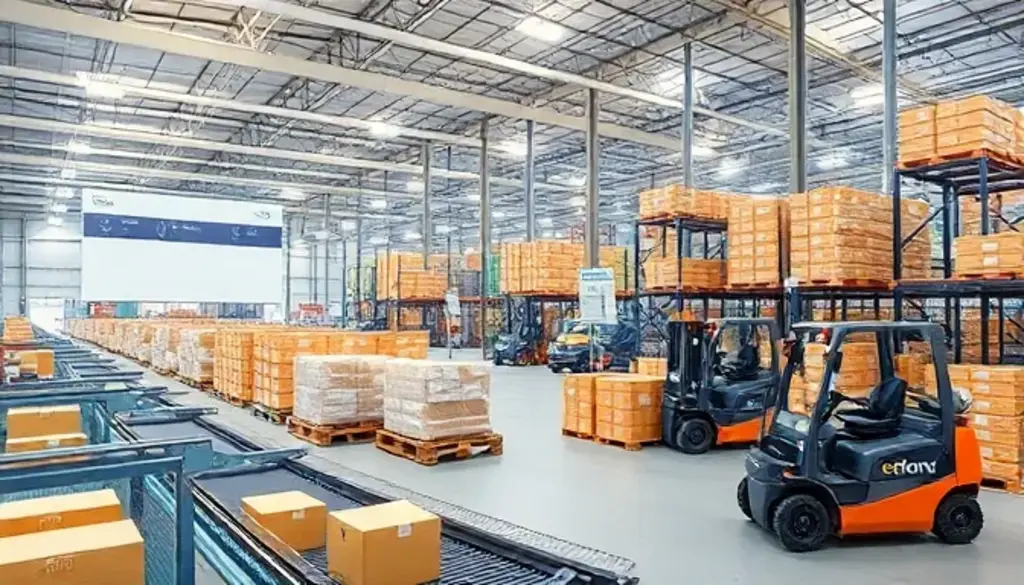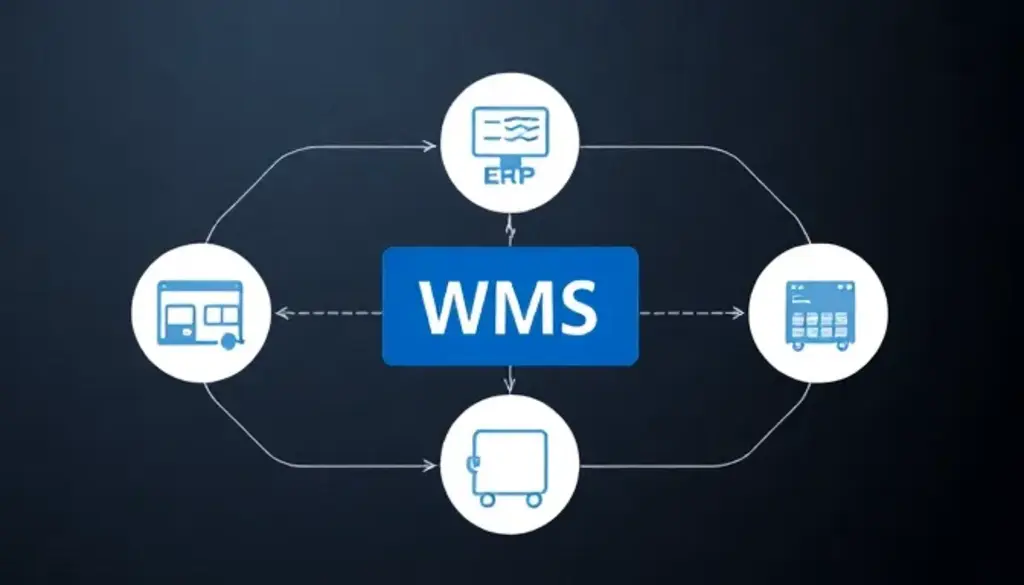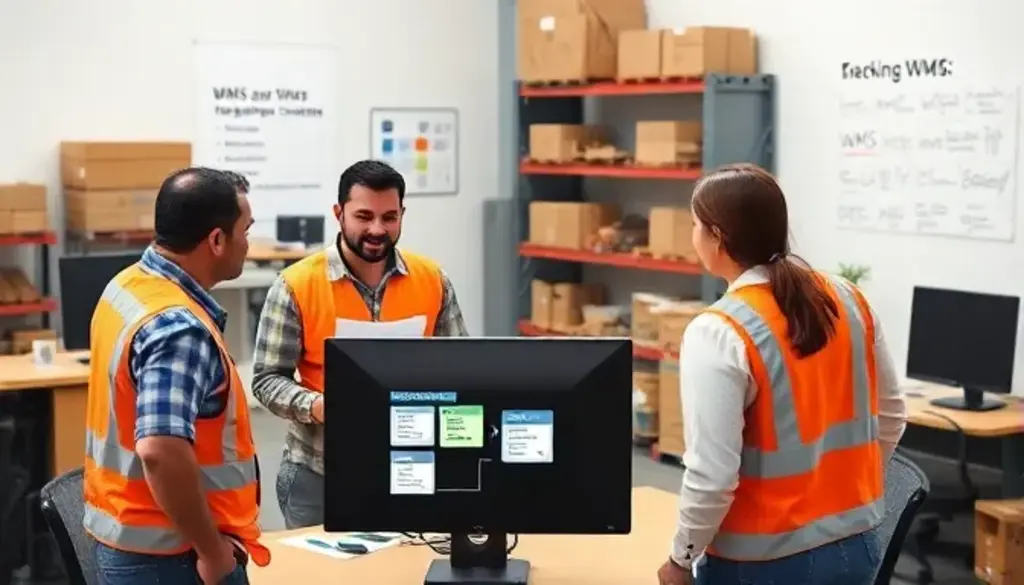
In today’s fast-paced logistics and supply chain landscape, the integration of a Warehouse Management System (WMS) is more than just a technological upgrade—it’s a strategic necessity. As warehouses strive to meet the demands of efficiency, accuracy, and speed, integrating a WMS can significantly transform operations. This blog post explores the fundamental benefits and various types of WMS integration, offering insights into its critical role in enhancing warehouse operations. By the end of this article, you’ll understand how WMS integration can drive operational excellence and help your business stay competitive.
What is WMS Integration?
Warehouse Management System (WMS) integration involves connecting a WMS with other systems within a company’s technology stack, such as Enterprise Resource Planning (ERP) systems, transportation management systems, and e-commerce platforms. This integration ensures seamless data flow and coordination across different functions, enhancing overall efficiency.
Integrating a WMS into existing technology stacks is crucial for several reasons. It allows for real-time data sharing, which is vital for maintaining accurate inventory levels and improving order fulfillment processes. Moreover, it helps eliminate data silos, ensuring that all departments have access to the same information, thus fostering better collaboration and decision-making.
Key Benefits of WMS Integration for Warehouse Operations
Enhanced Inventory Management and Accuracy
One of the primary benefits of WMS integration is improved inventory management. By providing real-time visibility into inventory levels, a WMS helps reduce stock discrepancies and ensures that inventory data is always accurate. This accuracy is crucial for preventing stockouts and overstock situations, which can lead to lost sales or increased holding costs. A study by the Warehousing Education and Research Council found that companies with integrated WMS systems reported a 25% reduction in inventory carrying costs.
Improved Order Fulfillment Processes and Customer Satisfaction
WMS integration streamlines order fulfillment processes by automating tasks such as picking, packing, and shipping. This automation reduces human error and speeds up the fulfillment process, leading to faster delivery times. As a result, customer satisfaction improves due to timely and accurate order deliveries. According to a report by McKinsey & Company, companies that have optimized their order fulfillment processes through WMS integration have seen a 30% increase in customer satisfaction scores.
Streamlined Operations and Reduced Operational Costs
By automating routine tasks and optimizing resource allocation, WMS integration helps streamline warehouse operations. This efficiency leads to reduced labor costs and minimizes the need for overtime. Additionally, by optimizing space utilization and reducing waste, WMS integration can significantly lower operational costs. A survey by the American Productivity & Quality Center indicated that businesses with integrated WMS systems, such as Logimax WMS, experienced a 20% reduction in operational costs.
Incorporation of Real-Time Data for Better Decision-Making
Real-time data is invaluable for making informed decisions. WMS integration provides managers with up-to-the-minute data on inventory levels, order statuses, and resource availability. This data empowers decision-makers to respond swiftly to changes in demand, supply chain disruptions, or operational challenges. For instance, during peak seasons, real-time data can help managers allocate resources more effectively to meet increased demand.
Different Types of WMS Integration
Standalone WMS Integration
Standalone WMS solutions are designed to operate independently but can be integrated with other systems as needed. These systems are ideal for businesses that require specific warehouse management functionalities without the need for extensive integration with other enterprise systems.
ERP-Integrated WMS Solutions
ERP-integrated WMS solutions are part of a larger ERP system, providing a comprehensive approach to managing all aspects of a business’s operations. This integration ensures seamless data flow between warehouse operations and other business functions, such as finance and procurement. It is particularly beneficial for large organizations that require a unified system for managing complex operations.
Cloud-Based WMS Integration
Cloud-based WMS solutions offer flexibility and scalability, making them an attractive option for small to medium-sized enterprises (SMEs). These systems can be easily integrated with existing technology stacks and provide access to real-time data from anywhere, facilitating remote management and decision-making.
Custom vs. Off-the-Shelf WMS Solutions
Businesses can choose between custom-built WMS solutions tailored to their specific needs or off-the-shelf solutions that offer standard functionalities. Custom solutions provide greater flexibility and can be designed to meet unique operational requirements, while off-the-shelf solutions are typically more cost-effective and quicker to implement.
WMS Integration Challenges and How to Overcome Them
Common Integration Challenges: Data Silos, System Compatibility, and User Adoption
Despite its benefits, WMS integration can present challenges. Data silos can occur when systems are not properly integrated, leading to fragmented information. System compatibility issues may arise if the WMS is not compatible with existing technology. Additionally, user adoption can be a hurdle if employees are resistant to change or find the new system difficult to use.
Strategies for Effective WMS Implementation
To overcome these challenges, businesses should conduct a thorough needs assessment to identify specific requirements and potential obstacles. Ensuring system compatibility through rigorous testing and selecting a user-friendly WMS can facilitate smoother integration. Providing comprehensive training and support can also enhance user adoption and ensure successful implementation.
Tips for Choosing the Right WMS for Your Warehouse Needs
When selecting a WMS, consider factors such as scalability, ease of integration, and the specific functionalities required for your operations. Evaluate different vendors and solutions to find one that aligns with your business goals and budget. Engaging with industry experts or consultants can provide valuable insights and help in making an informed decision.
Future Trends in WMS Integration and Warehouse Technology
Emerging technologies are set to further revolutionize warehouse management. Artificial intelligence (AI) and machine learning are playing an increasingly significant role in optimizing WMS functionalities. These technologies can enhance predictive analytics, automate routine tasks, and improve decision-making processes. Additionally, the Internet of Things (IoT) is enabling more connected and intelligent warehouse environments, providing real-time data and insights.
Predictions for the future of warehouse operations technology include the continued rise of automation and robotics, further integration of AI and machine learning, and the expansion of cloud-based solutions. As these technologies evolve, warehouses must adapt to remain competitive and efficient in a rapidly changing industry.
Logimax WMS: Enhancing Warehouse Efficiency Through Seamless Integration
Logimax WMS is a powerful, flexible warehouse management system designed to help businesses optimize their operations through seamless integration. Built on a robust IBM i platform, Logimax WMS offers real-time inventory visibility, automated workflows, and efficient order processing to enhance productivity. Its rule-driven architecture enables easy customization without extensive coding, allowing warehouses to adapt quickly to industry demands. By integrating with ERP systems, transportation management solutions, and other key technologies, Logimax WMS ensures smooth data flow across operations, eliminating inefficiencies and improving accuracy.
Conclusion
WMS integration is a transformative force in warehouse operations, offering numerous strategic benefits such as enhanced inventory management, improved order fulfillment, and reduced operational costs. By choosing the right type of WMS and addressing integration challenges, businesses can unlock the full potential of their warehouse operations. As technology continues to advance, adapting to these changes is essential for staying competitive and efficient in the logistics and supply chain industry.
Take Control of Your Warehouse Operations with Logimax WMS
Efficient warehouse management starts with the right technology. Logimax WMS simplifies inventory control, streamlines workflows, and enhances visibility across your supply chain. Ready to optimize your operations? Contact us today to learn how Logimax WMS can help your business thrive.
Frequently Asked Questions (FAQ)
What is the best type of WMS integration for small to medium-sized enterprises?
Cloud-based WMS solutions are often ideal for SMEs due to their scalability, lower upfront costs, and ease of integration with existing technology stacks. These solutions provide flexibility and allow businesses to access real-time data from anywhere, facilitating efficient remote management.
How does WMS integration impact third-party logistics (3PL) providers?
WMS integration allows 3PL providers to enhance their service offerings by improving resource management and streamlining operations. This leads to increased efficiency and better client satisfaction, as 3PLs can offer more accurate and timely services to their customers.
What are the first steps in planning a WMS implementation?
Start with a thorough needs assessment to identify specific requirements and objectives. Define clear goals for the WMS implementation and select a system that fits your technological and operational needs. Plan a phased implementation strategy to ensure a smooth transition and minimize disruptions.
Can WMS integration help in reducing warehouse operational costs?
Yes, WMS integration can significantly reduce warehouse operational costs by optimizing inventory levels, reducing errors in order processing, and improving labor management. By streamlining operations and enhancing efficiency, businesses can achieve substantial cost savings.
How long does it typically take to integrate a new WMS into existing systems?
The integration timeline can vary widely depending on the complexity of both the existing systems and the new WMS. Typically, the process can range from a few months to over a year. Proper planning, testing, and phased implementation can help ensure a successful and timely integration.






